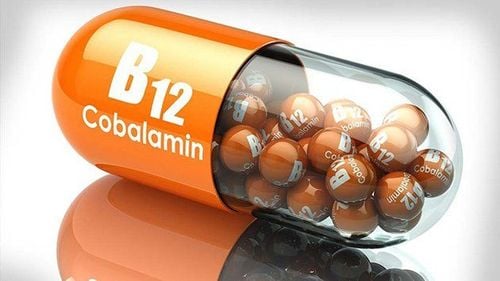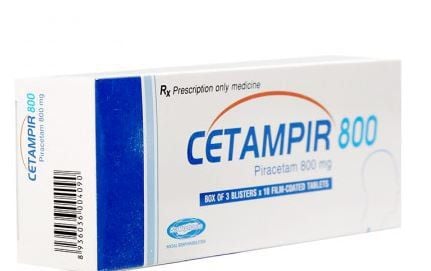This is an automatically translated article.
Ischemic condition causes many diseases that seriously affect the health and daily life of patients. In addition to a healthy lifestyle, drugs are indispensable in the treatment regimen. Pletaal is one of them. So what does Pletaal do?
1. What is the effect of Pletaal?
Pletaal drug has the active ingredient Cilostazol as the main active ingredient. The drug includes many dosage forms such as Pletaal 100mg injection solution, 100mg Pletaal tablets, and 50mg Pletaal pills. Both dosage forms carry all the physicochemical properties of the active ingredient Cilostazol.
Ingredients Cilostazol is a quinoline derivative with selective inhibition of phosphodiesterase type 3. From there, the active ingredient plays a role in increasing the concentration of cyclic AMP in platelets and blood vessels. As a result, the drug affects the contractile activity of smooth muscle cells, thereby helping to dilate blood vessels and prevent platelets from sticking together causing blood clots. Thanks to this, the blood circulation system is always circulated, helping blood flow in the arteries more easily.
Pletaal 100mg tablets are absorbed orally and will be better absorbed when with food containing a lot of fat. After entering the body, the active ingredient Cilostazol will be distributed in plasma and bind mainly with Albumin. The drug is extensively metabolised in the liver to form intermediates that are still active and mainly excreted in the urine, the remainder being eliminated as other metabolites. In addition, the drug Pletaal 100mg also has the property of accumulation in the blood when treated for a long time.
2. Indications of the drug Pletaal
Pletaal 100mg is indicated for the treatment of the following conditions:
Treatment of symptoms of ischemic disease including ulceration, pain and cold extremities in chronic arterial obstruction (such as: in Berger's disease, occlusive arteriosclerosis, diabetic peripheral vascular disease). Prophylaxis of recurrent cerebral infarction (except for cardiac embolism). Maximize pain-free walking distance improvement in patients with intermittent claudication without rest pain and without peripheral tissue necrosis such as peripheral vascular disease, stage II Fontaine's disease. Precautions for use: The efficacy of Pletaal 100mg tablets on cerebral infarction has not been studied in patients with asymptomatic cerebral infarction.
3. Undesirable effects of the drug Pletaal
Manifestations of myocardial infarction, congestive heart failure, ventricular tachycardia and angina pectoris. Attention should be paid to the presence of pancytopenia, agranulocytosis, agranulocytosis, and thrombocytopenia. There may be manifestations of bleeding tendency such as: intracranial hemorrhage, cerebral hemorrhage with characteristic signs such as headache, confusion, vomiting, nausea, hemiplegia. Monitor for more signs of gastrointestinal bleeding, pulmonary hemorrhage, and fundus bleeding. Lung-related adverse events such as interstitial pneumonia accompanied by fever, dyspnea, cough, chest X-ray abnormalities, eosinophilia. Liver dysfunction, jaundice with elevated AST, ALP, LDH or ALT subclinical indices. Decreased acute renal function. Discontinue use and initiate appropriate treatment when any side effects appear during the use of Pletaal 100mg.
4. Contraindications of the drug Pletaal
Contraindicated to use Pletaal 50mg or Pletaal 100mg for people who are sensitive or sensitive to any of the ingredients of the drug. Patients at risk of bleeding, with a history of severe arrhythmia, congestive heart failure. Do not use Pletaal for people with renal failure syndrome, moderate and severe liver failure. Use with caution in pregnant women because there are no studies on the extent of effects on the fetus. Not for use in women during lactation because the drug may be excreted in milk, causing harm to infants and young children. Use caution when driving or operating machinery.
5. Dosage and how to use Pletaal
5.1. How to take Pletaal Tablets Pletaal 50mg or Pletaal 100mg are taken orally. The drug is taken at least 30 minutes before eating or 2 hours after eating breakfast and dinner.
5.2. Dosage of Pletaal The usual adult dose of Pletaal 100mg tablets is 1 tablet x 2 times/day. Dosage may be adjusted according to the individual's age and severity of symptoms.
The above dosage is for reference only as recommended by the drug manufacturer. The specific dose depends on the condition and the progression of the disease. To get the right dose, you need to consult your treating doctor or medical professional.
5.3. Overdose or missed dose When you take an overdose of Pletaal, you may experience symptoms such as severe headache, diarrhea, heart palpitations and possibly arrhythmia. You need to go to the hospital for timely treatment. Doctors usually prescribe gastric emptying by induction of vomiting or appropriate gastric lavage.
When you miss a dose of Pletaal, take it as soon as possible. However, if the time interval is close to the next dose, skip the missed dose and take your next dose at the scheduled time. It should be noted that Pletaal 100mg should not be used in double the prescribed dose.
6. Interactions of Pletaal
Pletaal drug interactions may change the bioavailability of the drug or increase the risk of unwanted effects on the body. Therefore, you need to give information about the drugs you are taking to your treating doctor or clinical pharmacist to review to avoid drug interactions.
Some drugs when used together can interact with Pletaal 100mg, such as the following antibiotics: erythromycin, clarithromycin, ketoconazole, lovastatin,... Should not be used with other antiplatelet drugs, anticoagulants. blood, antithrombotic drugs caused by the drug Pletaal 100mg can increase the toxicity of these drugs. The bioavailability of the drug may be increased if used with other groups of antifungal agents or macrolide antibiotics. In contrast, the bioavailability of Pletaal is reduced if used in combination with drugs such as Deferasirox, a non-steroidal anti-inflammatory drug. Do not take the drug with grapefruit juice because of drug interactions.
7. Notes when using Pletaal
7.1. Precautions for taking Pletaal: Pletaal should be used with caution in people who are suffering from comorbidities such as liver and kidney disease or in people who are taking medications such as anticoagulants, antithrombotics, drugs. other antiplatelets. With caution when using in combination with other drugs to avoid drug interactions, you should consult your doctor for further advice. Do not stop taking the medicine on your own without consulting your doctor. 7.2. Note to pregnant and lactating women For pregnant women: Due to the lack of adequate studies on the effects of this drug on the fetus, Pletaal should only be used when it is weighed by a doctor. carefully weigh the benefits and risks. For women who are breast-feeding: Pletaal can be excreted in breast milk, so it should not be used because it may affect the health of the baby. Pletaal must be used in the correct dose, not taking an overdose will lead to a high risk of causing unwanted effects. In case of severe overdose, it is necessary to quickly contact a medical facility or go to the nearest hospital for timely emergency treatment.
Please dial HOTLINE for more information or register for an appointment HERE. Download MyVinmec app to make appointments faster and to manage your bookings easily.













